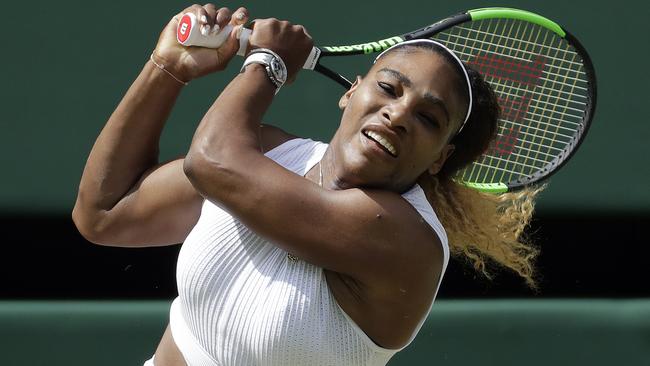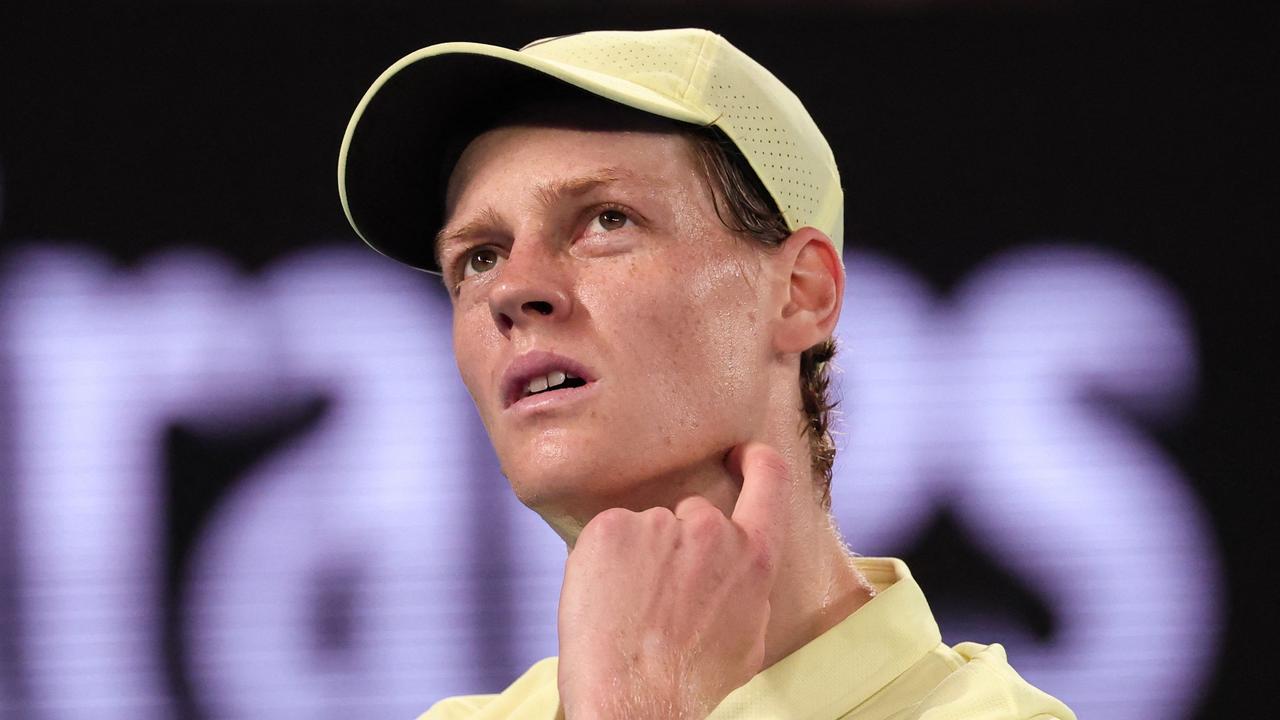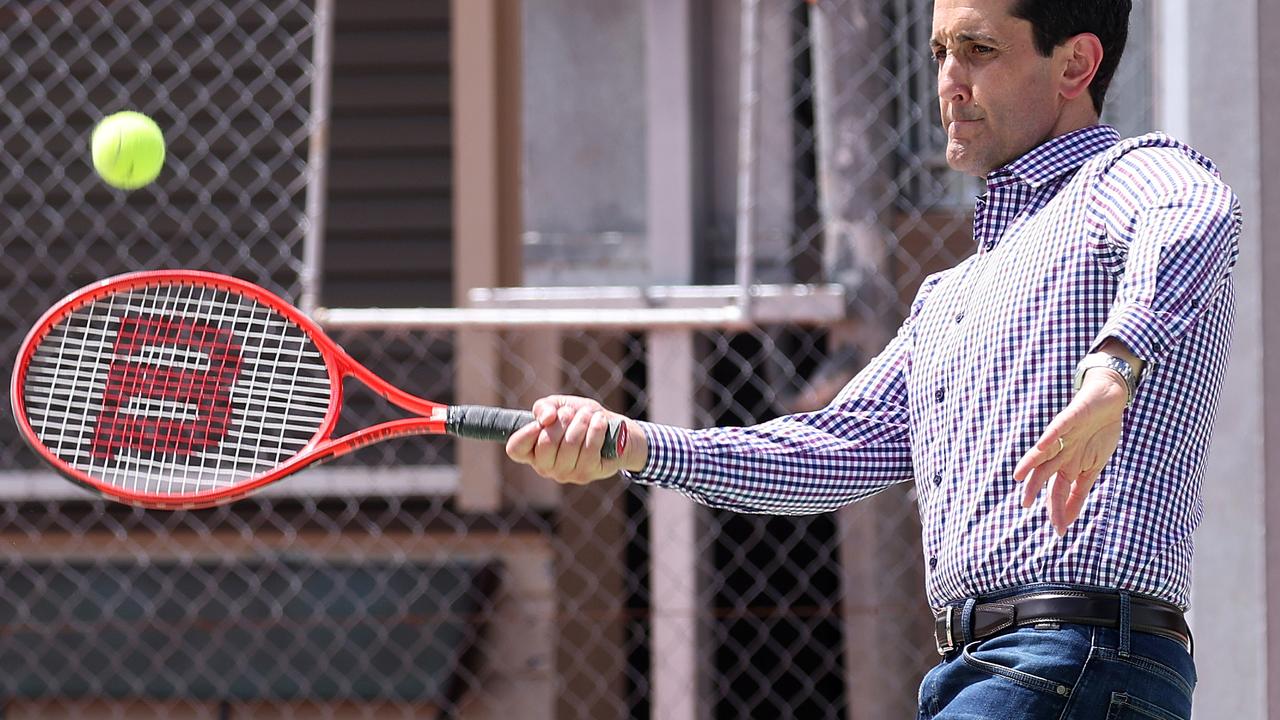Runaway success a blessing for some, curse for others
Serena Williams uses her natural advantage to great affect in her dominance of rivals.

We rightly celebrate the physical gifts that benefit Serena Williams. The traits that give her an acute advantage in tonight’s Wimbledon final. We may see Williams and Caster Semenya as chalk and cheese but they’re both heavyweights beating up on lightweights.
They’ve received the luck of the genetic draw but only one of them is being hounded out of her sport.
There’s differences, of course. The International Athletics Federation put Semenya through humiliating sex tests before mumbling about wanting to know if a “rare medical condition” gave her an “unfair advantage”. Appalling.
Williams has an unfair advantage, too, for being a whole lot of woman. She can hit the ball harder than anyone else in her sport. Her serve will be 40km/h faster than Simona Halep’s tonight.
Her peak forehands will be 30km/h quicker. That’s a heck of a head start. Good on her. Advantages aren’t unfair, they’re the name of the game, and yet the IAAF has ordered Semenya to take drugs to weaken her.
Nothing in sport right now is more ugly or disgusting than that. Semenya said this month that it’s “destroyed” her “mentally and physically”.
I watched Semenya win the 800m at the Gold Coast Commonwealth Games. It was like watching Williams destroy opponents in the three phases of her pomp: 2002-03, 2008-10, 2012-16.
In those peak years, there was virtually nothing anyone could do to beat her other than hoping she beat herself. Too strong. Too powerful. Too different.
I’ve always wondered when Maria Sharapova was busted for taking performance-enhancing drugs had she merely been trying to get to Williams’ physical level? Williams has been born with a physicality that can overwhelm and intimidate.
It’s brilliant. Beautiful. Semenya has only ever stepped onto the track with everything she’s been born with, too, and yet she’s told, you don’t belong here. You do not fit our mould. And yet no female athlete has ever broken tennis’s mould more strikingly than Williams.
She’s 175cm and 84kg. Her opponent Halep in tonight’s Wimbledon final is 168cm and 60kg. They wouldn’t be allowed in a boxing ring together.
Rarely in sport do you get one-on-one contests with a discrepancy such as this. Halep has beaten Williams only once in eight years, and therefore has been routinely blasted off the court in return.
The first bonus for Williams is the natural explosiveness. Power in tennis comes from leg strength and she has loads of that. The second plus is that she’s strong enough to use a racquet that is too much for her peers to handle.
Both Williams and Halep use a Wilson Blade. Williams’ has a bigger head size than Halep’s, adding power. It’s longer, adding more power. And it’s heavier, adding even more power.
Only Williams can lug that sort of bazooka around, as she’s thoroughly entitled to do, while the smaller athlete has to use the smaller racquet, the less dynamic piece of equipment. And so a tennis match will be contested in which one player has a seven centimetre advantage in height, a 24kg advantage in weight, a first serve that goes faster, groundstrokes that go quicker. And there’s no uniformity in equipment. If you lined up Williams and Halep on an athletics track, they’d appear as misplaced as Semenya and her rivals.
But of course, it can get complicated with Williams in major finals now that she’s on the cusp of matching Margaret Court’s record of 24. Tennis is mental, so to speak.
Meltdowns have become commonplace for Williams. She’s lost to Angelique Kerber (twice), Garbine Muguruza and Naomi Osaka when a 24th title has beckoned. She’s lost a US Open semi-final to Karolina Pliskova, and in a particular shocker, Roberta Vinci.
She lost in the quarter-finals of this year’s Australian Open and the third round at the French Open. I think her unsavoury loss to Osaka at Flushing Meadows has been the one that affected and changed her — until now.
Criticised for being a bad loser in New York, she’s departed Melbourne and Paris with barely a whimper, trying to be a good and respectful loser.
The 37-year-old has spoken about her final years on tour, and not wanting everyone to think poorly of her. Problem being, the nicer Serena was also a more beatable Serena. I think she decided before Wimbledon to go back to beast mode.
She was fined for damaging a practice court in a return to her racquet-throwing ways in London.
Death stares and ear-piercing vocals have returned. Years ago, when she was asked her response to those who thought she could be a bit of a cow, she replied, “Moo!”
I think she’s gone back to that, which spells a little trouble for Halep.
The serve is when Williams can look like she’s playing a different sport. She can hold serve as comfortably as the men, which is a compliment, and then attack an opponent’s vastly inferior delivery.
Australia’s Fed Cup captain Alicia Molik once said: “She’s dynamic, she’s powerful, she’s probably the best server in the world in women’s tennis.
“The amount of times over her 24-year career she’s been able to condense points because of an ace or an unreturnable serve — think about the amount of impact that takes away from her body in terms of having to rally, run, move and spend time on court.
“In big moments, she’s been able to crush so many opponents through a big serve whereas others have to work so hard.
“And when you’re a great server, mentally you have the advantage knowing you can shorten the point. You can serve an ace if you really want to.”
Her power is unrivalled. She will lap Halep in that regard. But the mentality? Williams’ coach Patrick Mouratoglou said in London: “Of course, it’s a grand slam final so it will be emotional, and Serena will want it incredibly bad, 24 or not 24.
“When you think about 24, you think about winning, but you can’t think about winning. You have to think about tactically, the ball comes, where do I play? Why? This is what you focus on. It’s the only way to forget about what you should forget about.”
Halep was preparing to punch above her weight. What a tall order. She’s a fighter’s chance, but if Williams is firing on all cylinders, the result is as inevitable as Semenya’s Commonwealth Games gold. The head start in physicality is significant.
“I’m desperate to win Wimbledon more than to stop her,” Halep said. “I’m not thinking about her record. It’s a great feeling to face Serena in a grand slam final.
“If you are able to win, it makes it sweeter. If you lose, then you have to look forward for the next one. I have no pressure on myself, just a positive one. I have expectations for myself that I can do a great job. I’m chilled.”




To join the conversation, please log in. Don't have an account? Register
Join the conversation, you are commenting as Logout